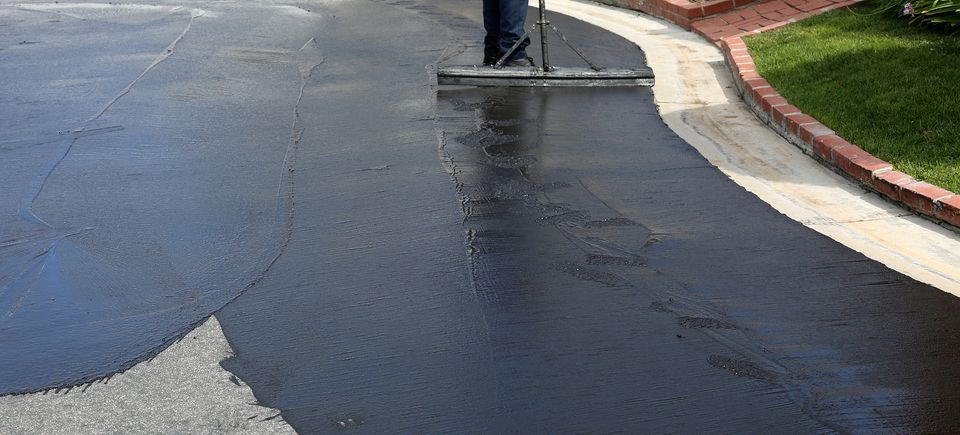Cold Mix Asphalt Vs. Hot Mix Asphalt: Which Is Right for You?

Structure Differences
Cold mix and warm mix asphalts vary substantially in their composition, with unique features that affect their efficiency and applications. Cold mix asphalt is produced by emulsifying the asphalt binder with water and an emulsifying agent prior to blending it with aggregate. This method permits the asphalt to be convenient at reduced temperature levels, making it optimal for temporary repair work and for use in cooler climate condition. Hot mix asphalt, on the various other hand, is produced at high temperature levels, generally in between 300-350 ° F, which assists to achieve far better compaction and an extra durable end product. The hot mix asphalt production procedure entails warming the aggregate and asphalt binder individually before integrating them at the asphalt plant.
In addition, cool mix asphalt often tends to be much less thick and more flexible than hot mix asphalt. This flexibility makes it much better fit for areas with higher levels of movement, such as driveways or roadways with rush hour. On the other hand, warm mix asphalt is recognized for its high resilience and resistance to rutting and fracturing, making it a favored choice for highways and high-traffic roads where longevity is crucial.
Installation Refine Variances
The process of installing cold mix and warm mix asphalt displays significant variations in their requirements and treatments. Cold mix asphalt, being an extra adaptable material, can be applied straight from the bag or container onto the crater or harmed location. It requires marginal preparation work, such as cleaning up the location and compacting the cool blend with hand tools. This makes it a convenient choice for short-lived and fast solutions. In comparison, warm mix asphalt necessitates a much more fancy setup process. It entails warming the blend to high temperature levels prior to laying it down on a correctly prepared base. The preparation consists of compacting the base, using a tack layer, and making use of hefty machinery like pavers and compactors for a long lasting and smooth finish. Because of the heating needs, warm mix asphalt setups are typically accomplished by find out experts with specialized tools, making certain a more structurally audio and long-term result.
Resilience and Long Life Variables
When thinking about asphalt options, longevity and long life are essential aspects to examine for lasting pavement efficiency. Warm mix asphalt (HMA) is recognized for its phenomenal toughness and longevity.
In terms of long life, HMA usually outshines CMA because of its exceptional strength and resistance buildings. HMA sidewalks have a longer life span, requiring much less constant repairs and upkeep, which can convert to set you back financial savings over time. In addition, HMA pavements are much more conveniently personalized to meet details task demands, better enhancing their sturdiness.
Price Factors To Consider
Thinking about the monetary effects is a vital aspect when evaluating the choice between warm mix asphalt (HMA) and cold mix asphalt (CMA) for pavement tasks. While the preliminary cost of hot mix asphalt is usually greater than that of chilly mix asphalt, HMA commonly supplies a more economical remedy in the lengthy run due to its superior durability and long life. HMA is recognized for its capacity to stand up to rush hour tons and severe climate condition, minimizing the demand for constant repairs and upkeep. On the various other hand, cold mix asphalt is extra inexpensive ahead of time but might require more regular patching and resurfacing, resulting in greater upkeep expenses with time.
In enhancement to material expenses, it's important to take into consideration the costs associated with setup and maintenance when comparing HMA and CMA. Eventually, the decision in between HMA and CMA should take right into account not just the initial price however additionally the long-lasting economic effects to establish the most affordable alternative for the certain pavement task.
Environmental Impact Contrast
Comparison of the environmental influences in between hot mix asphalt (HMA) and chilly mix asphalt (CMA) exposes distinct differences in sustainability techniques. HMA manufacturing calls for high temperature levels, leading to boosted power consumption and greenhouse gas discharges.
Moreover, making use of CMA usually includes recycling existing asphalt pavement, advertising resource preservation and reducing the amount of waste sent out to land fills. This recycling aspect even more enhances the sustainability of CMA compared to HMA. Overall, when thinking about the environmental impact, CMA emerges as an extra ecologically sustainable choice due to its reduced power needs, minimized discharges, and the potential for reusing existing materials. By choosing for CMA over HMA, road building jobs can contribute positively to environmental conservation efforts.
Conclusion
To conclude, the selection between chilly mix asphalt (CMA) and warm mix asphalt (HMA) depends upon numerous elements such as structure, setup procedure, durability, longevity, expense, and ecological influence. asphalt repair. While CMA look here provides a fast and cost-effective solution for small repair services, HMA guarantees remarkable longevity and longevity for rush hour locations. Consider these aspects very carefully to identify which kind of asphalt is the best option for your from this source paving needs

Taking into consideration the economic implications is a crucial element when evaluating the option between hot mix asphalt (HMA) and cold mix asphalt (CMA) for pavement tasks. While the first cost of hot mix asphalt is typically higher than that of cold mix asphalt, HMA often supplies an extra affordable option in the long run due to its exceptional sturdiness and long life. angle parking.Contrast of the ecological impacts between warm mix asphalt (HMA) and cool mix asphalt (CMA) exposes distinctive distinctions in sustainability techniques.In final thought, the option between cold mix asphalt (CMA) and warm mix asphalt (HMA) depends on different aspects such as make-up, setup process, longevity, long life, expense, and environmental effect
Comments on “Maximize Safety And Security with Angle Parking Lot: Superior Asphalt Sealing”